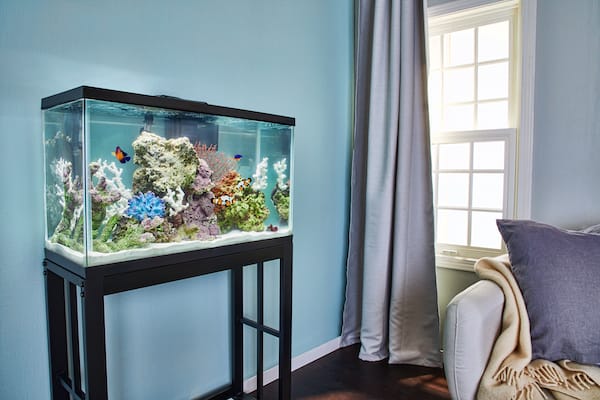Why is My Fish Coming to the Surface to Breathe?
Why is My Fish Coming to the Surface to Breathe?
Usually, aquarium fish happily swim and hang out at different depths of the aquarium. Some fish varieties prefer to dwell mostly near the bottom, while others are more inclined to spend their days in the middle or upper regions of the aquarium. One thing you don’t want to see, however, is a fish that is spending a lot of time right near the surface of the water—perhaps gasping—and in apparent distress.
Table of Contents
- How do fish breath?
- What to do if your fish are staying at the top of their tank
- Fish that are suppose to breathe at the top of their tank
- Related articles
How do fish breathe?
A fish may linger near the surface because he’s trying to breathe more easily. Remember, fish breathe dissolved oxygen—not oxygen that is already combined in the H2O molecule. Naturally, these dissolved oxygen levels tend to be higher near the surface, where interaction between air and water takes place. A fish that is not receiving enough oxygen will try to compensate by gravitating toward that area. Similarly, you may notice your fish lingering near the bubbles of your air stones or other bubble-producing décor.

What to do if your fish are staying at the top of their tank
An individual fish might not be getting enough oxygen because of a problem with his gills, such as gill flukes, parasites or injury. However, if you notice that multiple fish are trying to breathe at the surface of your aquarium or staying at the top of the tank, then it's likely that something is wrong with the conditions of your habitat. Be sure to check, and rectify, the following factors to ensure the health of your fish:
Poor water quality
Begin your troubleshooting process by performing a water test to rule out any issues with water quality (such as temperature, ammonia, nitrite, nitrate, hardness, salinity levels or pH levels). Next, try to determine other reasons your aquarium may be lacking oxygen. For example, if the water in your fish tank is cloudy or polluted, you may be overfeeding your fish, or you may have a dead fish in the tank. In either case, you will need to replace as much water as is needed to bring your tank conditions back into a healthy balance (typically up to one-third of the water is recommended).
Overcrowding
An overstocked aquarium—with too many fish polluting the water and competing for the same air supply—can cause low oxygen levels. For freshwater fish, start with the rule of thumb of "one gallon per one inch of adult fish," but keep in mind that this benchmark doesn't take into consideration the fact that some fish are larger-bodied and some varieties are more taxing on the aquarium environment than others. Use this rule only as a guideline when calculating the appropriate aquarium size and then do additional research and speak with experts at your local pet store. (Also, be sure to calculate the adult sizes of the fish in your aquarium—not the one- or two-inch juvenile fish that you bring home.)
Another cause of low oxygen in an aquarium can be a lack of surface area. Rather than considering only the volume of your aquarium, think about purchasing one with a larger surface area—that is, one with more air contact. Two aquariums might have the same volume, but if the shape of one allows it to have more surface area (shallower rather than taller), it will have higher oxygen levels, and that's always good.
Lack of aeration
Keep your fish's habitat water on the move. Mixing existing water with the surface water helps maintain good water quality and a good supply of dissolved oxygen throughout the fish tank. A set-up of properly maintained aquarium filters is critical for removing waste. In some situations, an even more powerful form of aeration—such as a power head—may be needed. Bubble-producing décor elements like an air stone or bubble wand can also add small amounts of oxygen, but are more for decorative purposes.
Improper water temperature
Water temperature can also play a role in oxygen concentration. Warm water holds less oxygen than cold water, so during summer months keep an eye on your habitat's temperature. Avoid letting it rise too high for long periods of time by regulating your water's temperature with a fish tank heater or chiller.
Fish that are supposed to breathe at the top of their tank
Finally, keep in mind that some varieties of fish—like bettas and gourami's—are actually supposed to breathe air from the surface. So if your aquarium is home to one or more of these, be sure that you don’t mistake normal behavior for an oxygen issue.

Comments
Post a Comment